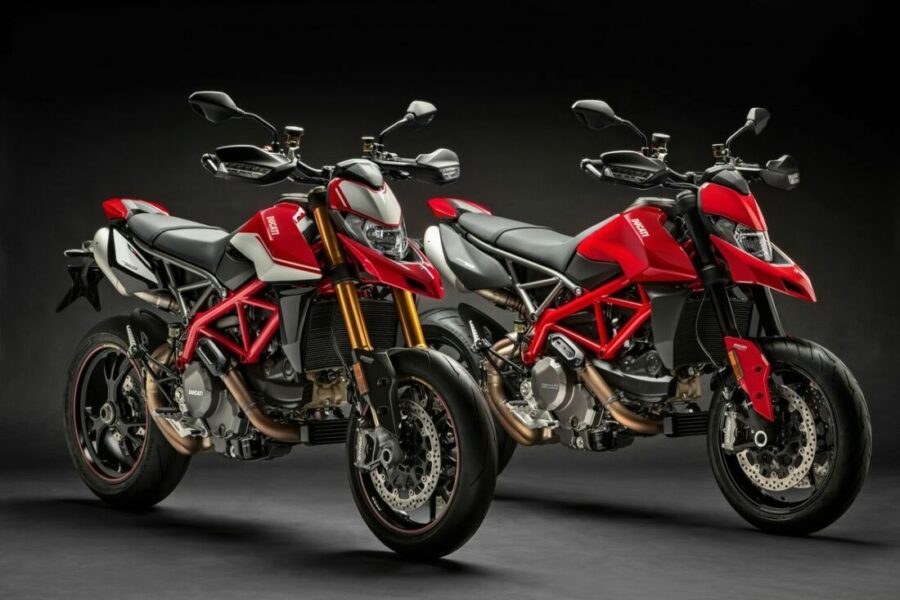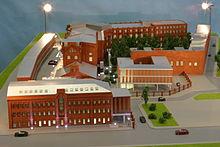
We drove: Ducati Hypermotard
Hypermotard was born almost ten years later, in 2007, and it was time for an update. The family consists of three members: in addition to the standard Hypermotarad 939, there is also the racing Hypermotard 939 SP and the hiker-enhanced Hyperstrada.
They are joined by a new Testastretta 11° unit of 937 cubic centimeters, larger than the previous 821 cubic centimeters, and therefore different dimensions. The larger the hole of the unit, which in the previous model had a diameter of 88 mm - in the new size 94 mm - the pistons are new, the crankshaft is different. As a result, the unit is slightly more powerful as it now has 113 "horsepower" instead of 110, 18 percent more torque, especially in the middle operating range (at 6.000 rpm). Even at 7.500 rpm, the torque is 10 percent higher than the previous car, the unit now has a new oil cooler added to help it cool down, and with a new exhaust system, it also meets the Euro 4 environmental standard.
Three persons of the same family
The Hypermotard is therefore a multi-purpose machine, since, as a multi-disciplinary specialist from Bologna, it can be used in different environments – of course, in different versions of the model. In a technical presentation, Ducati's husband Paul Ventura and Domenico Leo tell us a little more about the standard 939. Before they go to the Montserrat monastery, they present additional elements that were solved in Bologna during the renovation, especially the LED indicators and a slightly different counter armature, where there is also a new gear indicator.
The essential difference between all three models lies in the equipment and, accordingly, in the weight of each model. The standard model weighs 181 kilograms on the scale, the SP model weighs 178 kilograms, and the Hyperstrada weighs 187 kilograms. They also have a different suspension, Kayaba and Sachs on the base model and Hyperstard, noble Öhlins on the SP, and wheelbases and seat height from the ground differ. The racing WC also stands out for its brakes, a set of Brembo Monoblock radial brakes designed for tracks and also features a different exposed titanium exhaust system. It has multiple carbon fiber parts, magnesium rims and racing pedals.
Road problems
Seven on the standard 939. Even though the bike has a displacement of 937 cc, the official name is "upped" by two centimeters in volume because it sounds and reads better. At least that's what they say in Bologna. Mine is white, with registration number 46046 (ha!), which Gigi Soldano, a legend among motorcyclists and Rossi's court lens sharpener, reminds me of. Good good. So, in the rain, I set out on a test circuit that would take me from the hippodrome along the slopes of the park and the Montserrat mountain range (meaning "saw" in Catalan), first towards the Riera de Marganell and finally to the Montserarrat monastery. I'm a little surprised at first by the position - it requires the rider to extend their elbows due to the wider handlebars, while at the same time the position of the legs is more like that of off-road motorcycles or superbikes. . The same goes for pedals that are close to the device. Similarly, the seat is narrow and long, with plenty of room for a passenger, and shorter ones will have issues with seat height. Therefore, you can set a little lower. It is cold, less than ten degrees, it is raining and the unit must first be warmed up well. I then drive on twisty Spanish roads depending on the weather conditions, a colleague in front of me shook me twice in places where mud and water flowed across the road, the Ducati didn't "kick" me even once. If it was relatively stable even in heavy rain, it was worth testing in dry weather as well. Well, fortunately, the road, which climbs up the valley for about 10 kilometers towards Montserrat Monastery, was dry, and there it was possible to test what the new Hypermotard was capable of. Especially in tight and tight corners, it proves its agility, and on exits there is enough (now more) power so that with a decisive compression of the bike in the middle and upper range of the car, it can be casually put on the rear wheel. . Electronics (Ducati Riding Modes - engine operation mode and Ducati Traction Control - rear wheel traction control) and ABS did not change during the repair.
text: Primož Ûrman photo: завод
